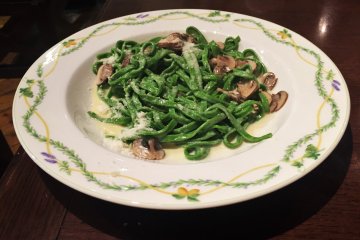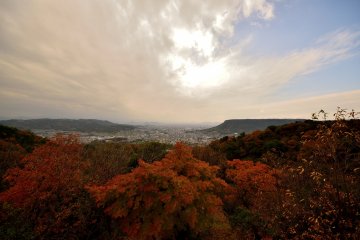
Sanuki Udon and Ritsurin Gardens
Nathan PalmerTakamatsu in Shikoku is where udon, a Chinese import, first appeared in Japan. Even today the superb local noodles draw tourists from across the country.

One of the most famous historical gardens in Japan, Ritsurin Garden in Kagawa Prefecture is home to sprawling verdant landscape, a tea house, folk art exhibitions, and even shops. Takamatsu City—where the garden is located—considers it one of the city’s main attractions. The various footpaths and bridges crossing the garden offer a variety of views and vistas all aimed at pleasing the eye and the spirit. To the west, guests can admire the scenery of Mount Shiun overlooking the garden. There are also many koi that can be fed with bread purchased from the Tea House.
Covering 750,000 square meters, Ritsurin Garden dates back to the 17th century. The construction of the garden, which began in 1625, took more than 100 years to complete and saw five different masters before reaching completion. In 1953, the garden was designated as a Special Place of Scenic Beauty in Japan.
A 10-minute walk from Ritsurin-Koen Station.

Takamatsu in Shikoku is where udon, a Chinese import, first appeared in Japan. Even today the superb local noodles draw tourists from across the country.

Ritsurin Garden is one of the most nationally acclaimed gardens in Japan. Standing for nearly 400 years, this garden is in the center of Takamatsu City, Kagawa. Visitors come from around the world to walk and enjoy the extensive grounds.

Ritsurin Park, in Takamatsu City, Kagawa Prefecture, is an old feudal garden often said to be on par with the Three Great Gardens of Japan. It features scores of pine trees, including the unique tsurukame black pine tree and the hakomatsu box pines.

In Takamatsu in Japan's Kagawa prefecture, Ritsurin-koen is the largest traditional garden in Japan, with beautiful views of tranquil ponds dotted with islands.

In Takamatsu in Japan's Kagawa prefecture, Ritsurin-koen is the country's largest gardens, and also one of its most beautiful.

Located in the center of Takamatsu city in Kagawa prefecture on the island of Shikoku, Ritsurin Garden offers a variety of pleasures to its visitors throughout a day such as boating, enjoying green tea, appreciating artifacts, and more.

To celebrate the stunning fall foliage at Kagawa's Ritsurin Garden, an autumn illumination event will be held for 10 days.

In Takamatsu in Kagawa prefecture on Japan's Shikoku island, Chisun Inn is a budget hotel convenient for the city's Japanese garden and other nearby attractions.

In Takamatsu in Japan's Kagawa prefecture on Shikoku island, First Inn is a cheap, fun capsule hotel, a convenient and uniquely Japanese place to stay.

An udon shop with a great atmosphere and an excellent menu in central Takamatsu.

Milano no Okazuyasan is a great Italian restaurant in downtown Takamatsu. Family run with a wide menu and generous portions, you get a great value here. The fettuccine, salad dressing, bread, and many of the desserts are fresh-made throughout each day.

Japan Travel teams up with the Savor Japan project to help you experience Kagawa prefecture's most famous food. Join expert udon noodle masters as they share their secrets in a one-time virtual event.

Takamatsu Castle in Kagawa Prefecture is also known as Tamamo Castle. The castle was built in 1590 by Ikoma Chikamasa, the first feudal lord of the Takamatsu Domain. Fifty-four years later the castle and fief were given to the Matsudaira clan. Being built on the shores of Takamatsu, the castle is well known as one of the three mizujiro (water castles) of Japan. Today, the castle grounds—particularly Sakura no Baba—are famous for cherry tree viewing in spring. There are also port facilities to the north side of the castle. Much of the castle is still visible and it has been declared a National Historic Site.

Shikoku Mura is an open-air architectural park in Takamatsu, Kagawa Prefecture, Japan. It houses over twenty buildings from around Shikoku dating from the Edo period through to the Taishō period, four of which have been designated Important Cultural Properties. Wikipedia
